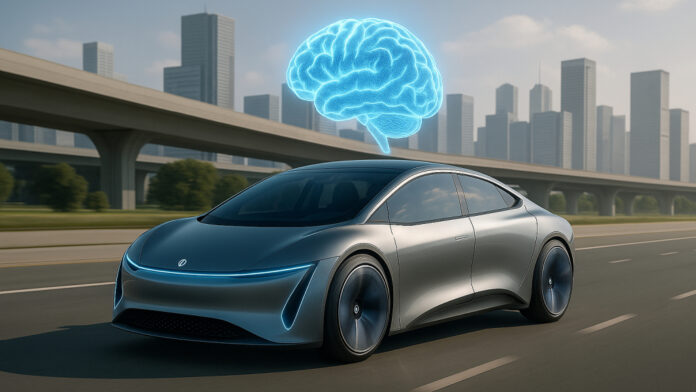Imagine a world where steering wheels and pedals are obsolete, where the mere power of thought can drive your vehicle. This is not the stuff of science fiction anymore; it’s the future that Brain-Computer Interfaces (BCI) promises. As we stand at the threshold of a new era in automotive technology, the question arises: Can we, in the foreseeable future, control our cars using just our minds?
This revolutionary concept could redefine our relationship with machines, making the driving experience more intuitive and immersive than ever before. The stakes are high as this could potentially transform not just personal transportation, but also industries like freight and logistics, public transit, and even space exploration. The race is on to turn this concept into reality, with researchers around the globe working tirelessly to break new ground in this exciting field.
The Mechanics of Brain-computer Interfaces
Brain-Computer Interfaces are systems that facilitate a direct communication pathway between the human brain and an external device. This technology leverages the brain’s electrical activity, translating it into commands that can control machines. The potential applications of BCI are vast, ranging from medical rehabilitation to gaming and virtual reality. But the concept of controlling a vehicle with the mind is perhaps one of the most thrilling prospects.
BCI technology works by detecting and decoding neural signals. These signals are produced when we think, and each thought or intention generates a unique pattern of signals. BCI systems are designed to recognize these patterns and translate them into specific commands. For instance, thinking about moving forward could be interpreted by the BCI as a command to accelerate the vehicle.
The implications of this technology are profound. It could make driving more accessible for people with physical disabilities, who might find traditional vehicle controls challenging to use. Moreover, it could also enhance the safety of driving by reducing the reliance on physical reaction times. However, there are also challenges to overcome, including the need for high precision and reliability, and addressing potential ethical and privacy concerns.
The Road Ahead for Brain-driven Vehicles
The journey towards brain-driven vehicles is fraught with technical and regulatory hurdles. Achieving the necessary precision in decoding brain signals is a significant challenge. The technology must be able to accurately interpret the driver’s intentions at all times, and any errors could have serious consequences. Additionally, the system must be robust enough to handle the myriad of environmental factors that can affect driving conditions.
Regulatory hurdles are another major obstacle. Before brain-driven vehicles can hit the roads, they must meet stringent safety standards and pass rigorous testing. The technology also raises questions about responsibility and liability in the event of accidents. Furthermore, there are concerns about the potential misuse of the technology and the need to protect the privacy of users’ brain data.
Despite these challenges, progress is being made. Several tech companies and research institutions are exploring the possibilities of BCI technology in vehicles. While we might be years away from commercially available brain-driven cars, the groundwork is being laid for a future where our thoughts could literally steer our path.
The Transformative Potential of Brain-computer Interfaces
The advent of BCI technology in the automotive industry could herald a new era of mobility. It could revolutionize the way we interact with vehicles, making the driving experience more seamless and intuitive. Beyond personal transportation, it could also have far-reaching implications for sectors like logistics and public transit. For instance, it could enable more efficient control of autonomous freight vehicles or provide a new level of accessibility in public transportation.
Moreover, the impact of BCI technology could extend beyond the realm of transportation. It holds promise in fields like healthcare, where it could enable patients with severe physical disabilities to control assistive devices with their minds. In the realm of gaming and virtual reality, it could offer a more immersive and interactive experience.
As we stand at the precipice of a new era in technology, the potential of Brain-Computer Interfaces is just beginning to be realized. The road to brain-driven vehicles may be long and challenging, but the destination promises to be transformative.


